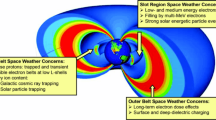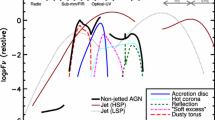Abstract
Particles are accelerated in cosmic sites probably under conditions very different from those at terrestrial particle accelerator laboratories. Nevertheless, specific experiments which explore plasma conditions and stimulate particle acceleration carry significant potential to illuminate some aspects of the cosmic particle acceleration process. Here we summarize our understanding of cosmic particle acceleration, as derived from observations of the properties of cosmic ray particles, and through astronomical signatures caused by these near their sources or throughout their journey in interstellar space. We discuss the candidate-source object variety, and what has been learned about their particle-acceleration characteristics. We conclude identifying open issues as they are discussed among astrophysicists. – The cosmic ray differential intensity spectrum across energies from 1010 eV to 1021 eV reveals a rather smooth power-law spectrum. Two kinks occur at the “knee” (≃1015 eV) and at the “ankle” (≃ 3×1018 eV). It is unclear if these kinks are related to boundaries between different dominating sources, or rather related to characteristics of cosmic-ray propagation. Currently we believe that galactic sources dominate up to 1017 eV or even above, and the extragalactic origin of cosmic rays at highest energies merges rather smoothly with galactic contributions throughout the 1015–1018 eV range. Pulsars and supernova remnants are among the prime candidates for galactic cosmic-ray production, while nuclei of active galaxies are considered best candidates to produce ultrahigh-energy cosmic rays of extragalactic origin. The acceleration processes are probably related to shocks formed when matter is ejected into surrounding space from energetic sources such as supernova explosions or matter accreting onto black holes. Details of shock acceleration are complex, as relativistic particles modify the structure of the shock, and simple approximations or perturbation calculations are unsatisfactory. This is where laboratory plasma experiments are expected to contribute, to enlighten the non-linear processes which occur under such conditions.
Similar content being viewed by others
References
T.K. Gaisser, J. Phys. Conf. Ser. 47, 15 (2006)
J. Linsley, Phys. Rev. Lett. 10, 146 (1963)
V. Hess, Z. Phys. 13, 1084 (1912)
I.A. Grenier, A.K. Harding, in Albert Einstein Century International Conference, American Institute of Physics Conference Series (2006), Vol. 861, pp. 630–637
R.A. Millikan, Annalen der Physik 384, 572 (1926)
P. Auger, T. Grivet, Rev. Mod. Phys. 11, 232 (1939)
P. Auger et al., Rev. Mod. Phys. 11, 288 (1939)
D.E. Brownlee et al., Meteoritics and Planetary Science 32, 22 (1997)
R. Battiston, J. Phys. Conf. Ser. 116, 012001 (2008)
E.C. Stone et al., Space Sci. Rev. 86, 285 (1998)
P. Picozza et al., Astrop. Phys. 27, 296 (2007)
M.H. Israel et al., Nucl. Phys. A 758, 201 (2005)
S.W. Barwick et al., Astrophys. J. 498, 779 (1998)
A.D. Panov et al., Adv. Space Res. 37, 1944 (2006)
J. Chang et al., Nature 456, 362 (2008)
A. Haungs, H. Rebel, M. Roth, Rep. Prog. Phys. 66, 1145 (2003)
T. Antoni et al., Astrop. Phys. 24, 1 (2005)
J.W. Cronin, T.K. Gaisser, S.P. Swordy, Scientific American 276, 32 (1997)
A.W. Strong, I.V. Moskalenko, O. Reimer, Astrophys. J. 537, 763 (2000)
A.W. Strong, I.V. Moskalenko, O. Reimer, Astrophys. J. 613, 962 (2004)
S. Gabici, F.A. Aharonian, Astrophys. Space Sci. 309, 465 (2007)
E.G. Berezhko, H.J. Völk, Astron. Astrophys. 419, L27 (2004)
T. Padmanabhan, J. Astrophys. Astron. 18, 87 (1997)
T. Padmanabhan, Theoretical Astrophysics Astrophysical Processes, Theoretical Astrophysics, Astrophysical Processes, edited by T. Padmanabhan (Cambridge University Press, December 2000).
K. Greisen, Phys. Rev. Lett. 16, 748 (1966)
G.T. Zatsepin, V.A. Kuz’min, ZhETF Pis’ma Redaktsiiu 4, 114 (1966)
R. Abbasi et al., Phys. Lett. B 619, 271 (2005)
The Pierre Auger Collaboration, Science 318, 938 (2007)
A.M. Hillas, e-print ArXiv:astro-ph/0607109 (2006)
J. Alcaraz, B. Alpat, G. Ambrosi, et al., Nucl. Instrum. Methods Phys. Res. A 478, 119 (2002)
O. Adriani et al., e-print ArXiv:0811.4019 (2008)
M.E. Wiedenbeck et al., in Joint SOHO/ACE workshop Solar and Galactic Composition, American Institute of Physics Conference Series, edited by R.F. Wimmer-Schweingruber (2001), Vol. 598, p. 269
M.E. Wiedenbeck et al., Space Sci. Rev. 130, 415 (2007)
F.W. Stecker, Astrophys. J. 6, 377 (1970)
E.C. Stone, M.E. Wiedenbeck, Astrophys. J. 231, 606 (1979)
N.E. Yanasak et al., Astrophys. J. 563, 768 (2001)
A.W. Strong et al., Astron. Astrophys. 422, L47 (2004)
A.W. Strong, I.V. Moskalenko, V.S. Ptuskin, Ann. Rev. Nucl. Part. Sci. 57, 285 (2007)
J.G. Luhmann, J.A. Earl, J. Geophys. Res. 78, 1502 (1973)
G. Kanbach, C. Reppin, V. Schoenfelder, J. Geophys. Res. 79, 5159 (1974)
J.W. Cronin, Rev. Mod. Phys. Suppl. 71, 165 (1999)
A. Spitkovsky, Astrophys. J. 682, L5 (2008)
M.A. de Avillez, D. Breitschwerdt, Astron. Astrophys. 436, 585 (2005)
M.S. Longair, High energy astrophysics. Stars, the galaxy and the interstellar medium, 2nd edn. (Cambridge University Press, 1994), Vol. 2
E.G. Berezhko, D.C. Ellison, Astrophys. J. 526, 385 (1999)
D.C. Ellison, Space Sci. Rev. 99, 305 (2001)
D.C. Ellison, G. Cassam-Chenaï, Astrophys. J. 632, 920 (2005)
S.-H. Lee, T. Kamae, D.C. Ellison, Astrophys. J. 686, 325 (2008)
D.C. Ellison, E.G. Berezhko, M.G. Baring, Astrophys. J. 540, 292 (2000)
F. Aharonian et al., Astron. Astrophys. 425, L13 (2004)
F. Aharonian et al., Nature 439, 695 (2006)
M.G. Baring et al., Astrophys. J. 513, 311 (1999)
T. Tanimori et al., Astrophys. J. 497, L25+ (1998)
F. Aharonian, A. Neronov, Astrophys. Space Sci. 300, 255 (2005)
J. Albert et al., Astrophys. J. 665, L51 (2007)
Y. Uchiyama, F.A. Aharonian, T. Takahashi, Astron. Astrophys. 400, 567 (2003)
J.M. Paredes, e-print ArXiv (2008)
J. Dyks, A.K. Harding, B. Rudak, Astrophys. J. 606, 1125 (2004)
A.K. Harding, in The First GLAST Symposium, American Institute of Physics Conference Series, edited by S. Ritz, P. Michelson, C.A. Meegan (2007), Vol. 921, pp. 49–53
T.K. Gaisser, T. Stanev, Nucl. Phys. A 777, 98 (2006)
I.F. Mirabel, L.F. Rodriguez, Nature 371, 46 (1994)
V. Bosch-Ramon, F.A. Aharonian, J.M. Paredes, Astron. Astrophys. 432, 609 (2005)
A. Neronov, F.A. Aharonian, Astrophys. J. 671, 85 (2007)
S.E. Woosley, J.S. Bloom, Ann. Rev. Astron. Astrophys. 44, 507 (2006)
P. Meszaros, M.J. Rees, Astrophys. J. 405, 278 (1993)
A. Henig et al., Phys. Rev. Lett., in press
Author information
Authors and Affiliations
Corresponding author
Rights and permissions
About this article
Cite this article
Diehl, R. Particle acceleration in cosmic sites. Eur. Phys. J. D 55, 509–518 (2009). https://doi.org/10.1140/epjd/e2009-00183-8
Received:
Revised:
Published:
Issue Date:
DOI: https://doi.org/10.1140/epjd/e2009-00183-8




